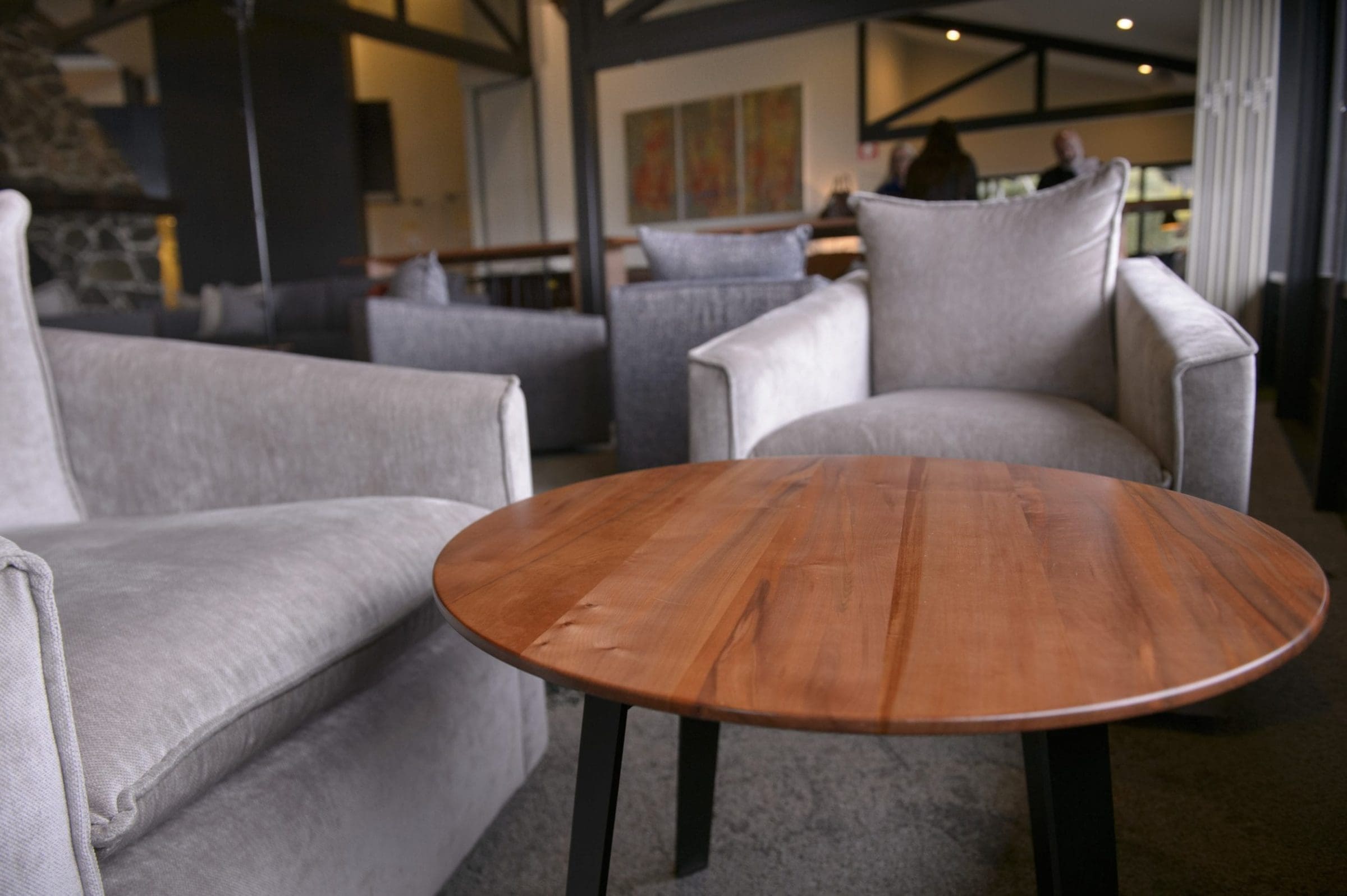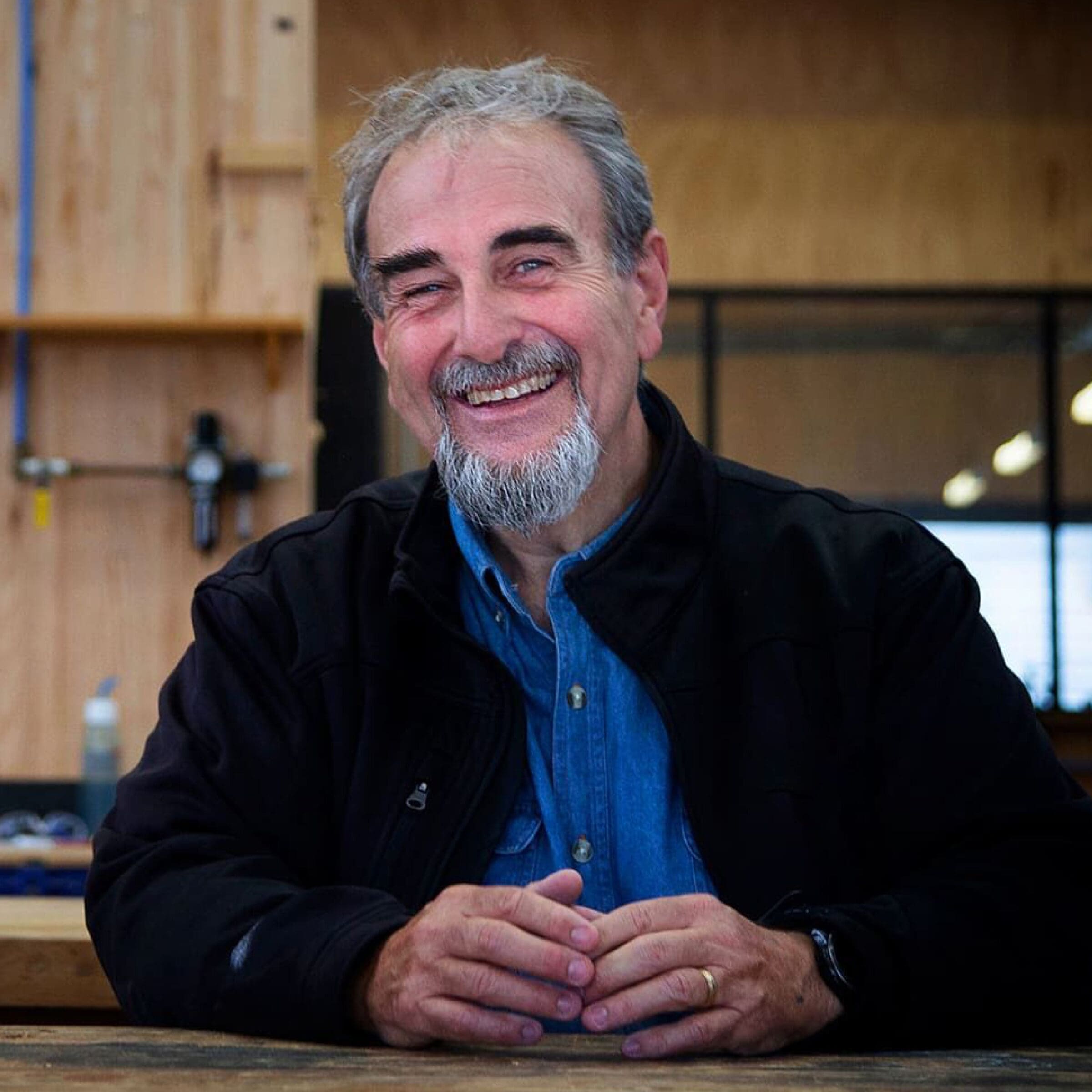Reclaimed Tasmanian Myrtle furniture by Simon Ancher transforms Freycinet Lodge
Freycinet Lodge on Tasmania’s beautiful east coast has recently undergone a major design refresh of its dining, bar and lounge area.
The new Freycinet Lodge interior dazzles with carefully selected materials reflecting the surrounding natural environment. Cosmetic touches including new carpet, paint, lighting and décor have all seen an update, but it’s the hero pieces such as the distinctive furniture of Tasmanian furniture designer maker, Simon Ancher, now throughout, that makes the refurbishment truly stunning. Tasmanian Myrtle was his material of choice.
Playing with space, volume and geometry, Simon Ancher’s Myrtle furniture designs are prevalent throughout the lodge’s updated interior. Creating a collection of bar style benches, coffee tables, side tables and shelving units, the pieces spark intrigue as Simon’s use of deep shallow chamfers and triangular geometries seem to defy logic. Staying true to his Tasmanian heritage and his respect for nature and sustainability, reclaimed Myrtle was used across the entire collection to create a contemporary Tasmanian edge while keeping the space warm and inviting.
We talked to Simon about the collection, his inspiration and Reclaimed Tasmanian Myrtle.
Why did you choose Reclaimed Myrtle for this project?
I was drawn into the unusual and intriguing back story behind reclaimed Tasmanian Myrtle – called Hydrowood. I’m proud to support this innovative process, bringing something back to life that would otherwise remain lost at the bottom of a lake. The timber is really getting a second chance and to make use out of a resource that was thought to be destroyed is a special privilege.
What was it like to work with Myrtle?
Why did you choose Reclaimed Myrtle for this project?
I was drawn into the unusual and intriguing back story behind reclaimed Tasmanian Myrtle – called Hydrowood. I’m proud to support this innovative process, bringing something back to life that would otherwise remain lost at the bottom of a lake. The timber is really getting a second chance and to make use out of a resource that was thought to be destroyed is a special privilege.
What was it like to work with Myrtle?
Reclaimed Myrtle was used for this project. It is a species that I haven’t really used in a very long time. I loved the beautiful rich colour variations that are a feature of Myrtle and for a furniture maker, colour matching was a fun challenge.
“The workability of the Myrtle was impeccable, it was easy to process through the machine and also sanded beautifully.”
Was sustainability an important part of this project?
Absolutely, which was part of the reason why Reclaimed Myrtle (Hydrowood) was selected. Following the unique process of retrieving these logs from the depths of Lake Pieman, I was conscious of making use of every bit of material (within reason). The Myrtle I selected was originally processed for flooring, but by thinking about alternate methods of construction I was able to utilize this material.
A large proportion of the material was laminated and resawn which enabled me to get more mileage out of the timber so nothing was wasted. It was definitely a labour of love but I’m very pleased with the outcome.
What was the design process like?
Being conscious of the existing space, I wanted to link aesthetics with structure and to create a collection where all the pieces feel like they’re a part of a family. Because some of the pieces like the bar and benches are so large, I had to take into consideration the transportation of the collection and as a result, all the pieces are easily broken down into smaller elements.
The ease of dismantling not only allows for the furniture to be transported but it’s also great for the longevity of the furniture. If there is ever any damage, the piece could be broken down and the repair could be isolated to the damaged area only.
“In all my designs, for every project, my aim is to produce objects that have a lasting quality, physically and aesthetically.”
Where did you draw inspiration from for this collection?
Triangulation and geometry came into play in the creation of these pieces to make sizeable objects that don’t have a huge volume. I wanted to create something that would spark curiosity and interest, inviting people to take a closer look. From certain angles, the wedge aspect of the design begs the viewer to take an up-close look to see how it works.
What inspires you outside of the studio?
I love being out in nature and noticing the subtleties of the surrounding environment to help calm the mind. It may be the flatness of the water or the gentle light at dawn. I take these moments with me back into the studio and try to reproduce these feelings of wonder and unexpectedness in the design of furniture and object.
Are you happy with the end result?
I’m very pleased with the outcome of the furniture at Freycinet Lodge. I especially love the warm quality of the pinks and the browns of the Myrtle against the black steel. I enjoyed using the Myrtle as a relatively new material to me and am looking to add a few new pieces to the wedge range including a lounge chair and a couch.














